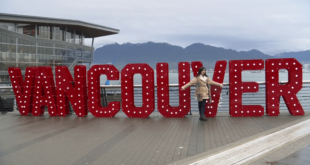It’s true! Humans can actually be diagnosed with a fear of being out of mobile phone contact. These “nomophobic travelers” are overcome with feelings of anxiety, depression, desperation and sickness. In fact, a Harris Interactive poll reported that 74% of respondents actually panicked when they lost a phone in the past. Sound familiar?
Millennials are the most affected by this modern condition, with 54% of Millennials reporting that they are always connected and 36% checking in at least once an hour (2015 Braun Research Study). For destination marketers this has implications, especially now that the Millennial market is bigger than the traditionally targeted Baby Boomer market. Millennials who are members of the “Digital Elite,” tend to have higher annual household incomes, spend $1,851 more on vacations than travelers who are less connected and 54% use their smartphone while on vacation as often as they do at home (2014 Portrait of Digital Travelers™).
So what can DMOs do to leverage the nomophobic tendencies of Millennial travelers?
Create Device Responsive Websites
Ensure your DMO website is crafted for easy viewing on all screens – desktop, laptop, tablet, SmartTV and smartphone. Responsive web design (RWD) is vital for today’s multiscreen usage environment and makes expensive app development obsolete.
Engage on Social Media Channels Before, During & After Travel
Social media is a vital tool to engage nomophobic travelers at all stages of the travel cycle. Dedicate resources to ensure communication of trip itinerary ideas, promotions and booking prior to departure. While they are in the destination, engage through check-in promotions, respond to their questions, provide connections with locals and amplify UGC. Upon their return, stay connected to encourage additional posting of trip photos. Tourism Australia has been credited to having one of the strongest DMO social engagement programs in existence.
Stage Photo Opps In-Destination
Create branded photo opportunities in your destination to encourage photo taking and sharing. Cape Town, South Africa has had success with its frame photo activation on the V&A Waterfront. A photo by Amsterdam’s famous “I Am Amsterdam” signs has become a must for visitors.
Embrace Influencer Engagement
Bring strategic digital influencers to your destination. These authorities on social channels command an engaged following that are influenced by the content they post. Beyond targeting travel digital influencers, seek out relationships with influencers that specialize in different areas that align with your destination – craft beer, design, culture, fashion, food etc.
Provide Connections with Locals
Develop social media programs that encourage your local community to become destination ambassadors. For example, Visit Buffalo Niagara has developed a Twitter initiative that connects meeting attendees with locals who offer advice on things to do and where to eat – all connected by the gathering’s hashtag.
Go Cold Turkey: Development of Nomophobia Retreats
And then there is a radical idea – work with your accommodation partners to develop retreat programming that tackles this condition head on. Need inspiration? See these digital detox ideas from Canada.
You can read more of the news on source
 Travelsmart
Travelsmart



